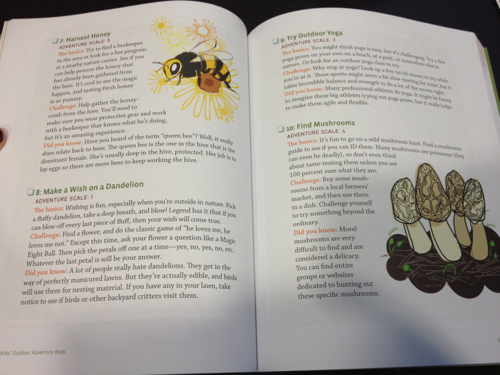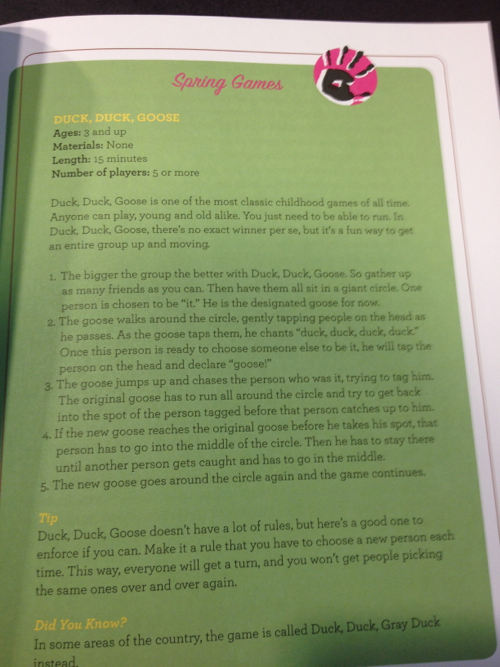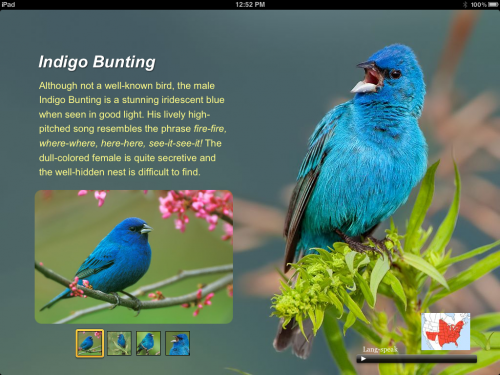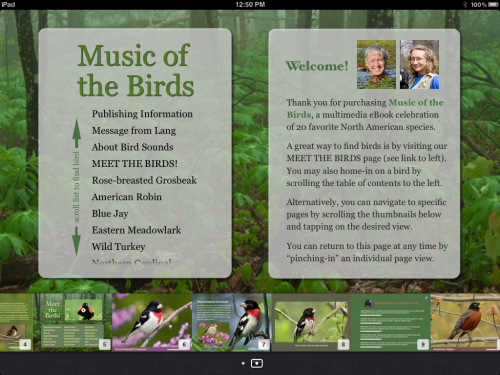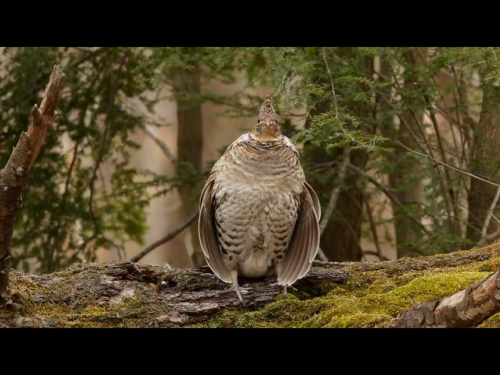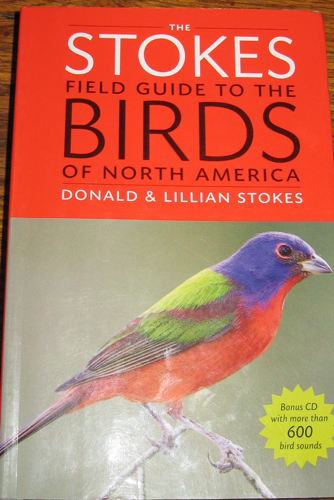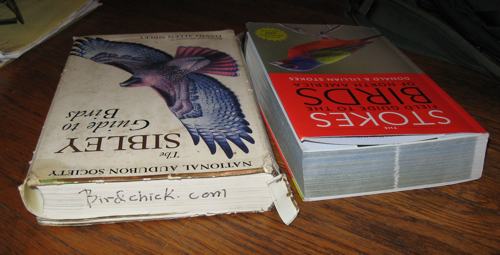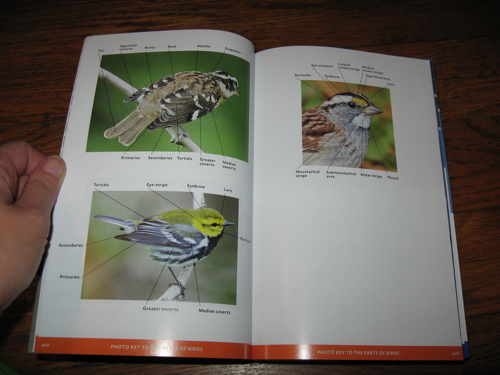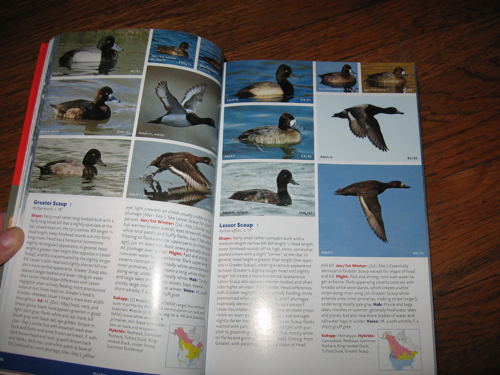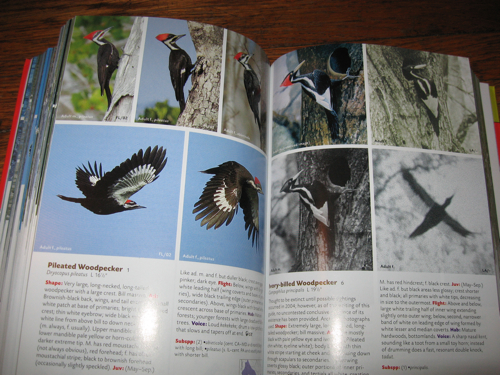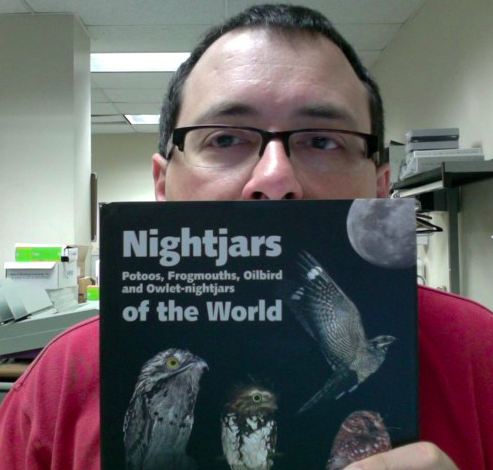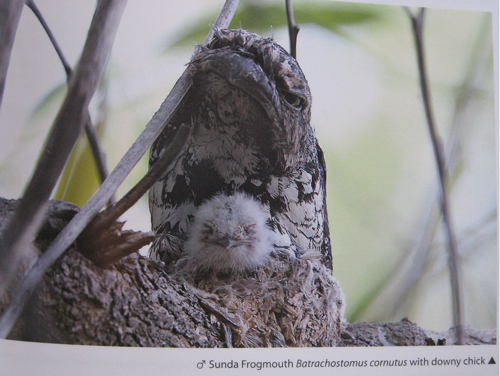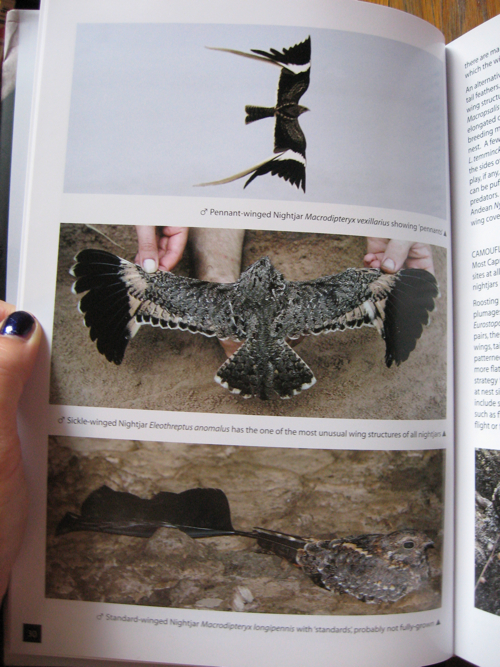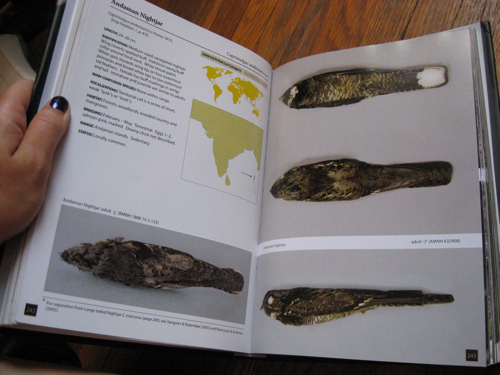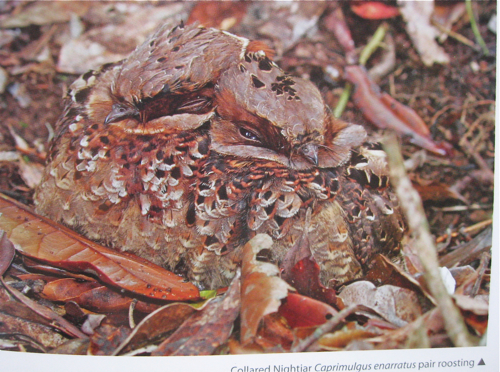One thing birders have been talking about like crazy for the last few months is the news that David Sibley was updating his popular field guide The Sibley Guide To Birds and we've all been aching to see it. Mine arrived from FedEx on Friday.

Personally, I am far more interested in this update in app form than I am in book form. I asked Sibley when the app update will be coming and he said, "The app revision is in progress, and it will be a major overhaul with all of the new art, text, and maps from the revised book, but still no firm completion date. It will be at least a couple of months more."
So we have to wait for that one. Based on how much work has been added to the guide, I imagine that we will have to purchase a new app or at least pay for an update to the old one. And looking at the new Sibley...I'm ok with that. There's a lot of work that went into this guide and well, being in the arts community, I like paying artists.
Now, the book: it's beautiful...and bigger. My kitchen scale puts my old Sibley at 2 pounds 10 ounces and the new Sibley comes in at just under 3 pounds (that's no big deal cause we're not supposed to take it out in the field but study at home, right?). But that increase in size includes larger images, updated maps, updated illustrations, revised taxonomy (yeah, cause that's constant), more text on identification tips of tricky species as well as habitat and foraging behavior. Check out the above bluebird plates and note the addition of a sketch to differentiate bluebirds based on tail length, I love those additions. This is almost like having a Sibley guide with his personal field notes in there. The font is a little on the small side and considering the average age of most birders, that might be an issue for some.
There are 600 new paintings, some include the addition of 111 rare species but others include really cool touches like finding nightjars in the dark. There's a lot more to this book to truly help someone figure out what they are seeing not only based on field marks but with habitat. I am overwhelmed at the amount of work Sibley has put into this guide by not only doing all his own illustrations, but writing the concise text as well.
There have been rumors about color issues. The first edition of Sibley had some people saying the birds were too bright and the reds too vibrant, that never bothered me. Early reviews of this second edition said the prints were too dark. In The Nature Travel Network review plates being too dark was brought up as an issue, Sibley even defended the colors in the comments section and felt that he and the reviewer may have had a difference of opinion. So the first thing I did with the new Sibley was check the reds by going to the tanager page. The scarlet tanager looked dark to me. As I was looking at that, a second package with another new Sibley arrived from FedEx. Somehow I ended up with two review copies. I opened it hoping that maybe I had been sent two different printings.
Above is a comparison. From left to right we have my old Sibley and then the 2 new Sibley guides on the scarlet tanager. To my eye, that red in the new guides looks too dark for scarlet tanager. Non Birding Bill looked over my shoulder and said, "Yeah, but what else can you mistake a tanager for? Even I know that one."
Funny thing is, I had just gotten an email that morning from someone in Wisconsin telling me that scarlet tanagers were perhaps back early because they saw two but they had black chins (and no they couldn't have been cardinals because they didn't see the crest). Sigh.
I thought that maybe this was just the tanager and I was being too nit picky and I'd look at different sorts of reds. I headed to the red-shouldered hawk plate. It seemed dark too. I have a Sibley raptor poster framed in my bedroom and the company that produced that went to great pains to give true color to Sibley's original plates. Here is a comparison:
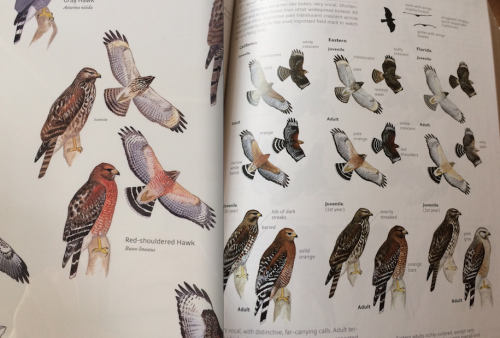 On the left is a clip from my Sibley poster and on the right is the red-shouldered hawk page in the new Sibley. Where it reads "orange bars" in the book, it looks brown to me. The poster image of a red-shouldered hawk is what I think of when I see them on sunny or cloudy days in the wild. I think this is strictly a printing issue and is one of the reasons why I'm more interested in the Sibley Guide as an app than I am as a book.
On the left is a clip from my Sibley poster and on the right is the red-shouldered hawk page in the new Sibley. Where it reads "orange bars" in the book, it looks brown to me. The poster image of a red-shouldered hawk is what I think of when I see them on sunny or cloudy days in the wild. I think this is strictly a printing issue and is one of the reasons why I'm more interested in the Sibley Guide as an app than I am as a book.
Here's a comparison of yellows for those interested, with my old Sibley is on the left and the new Sibely is on the right. The yellow seems a bit more on the green side in my new edition, but it is slight and doesn't bother me. When the book hits stores on March 11, 2014 I'm going to check a couple of my local stores and see how their versions vary from mine. I contacted the publicist and asked if I got an old copy but she said the two that I have should be what will be in stores next week.
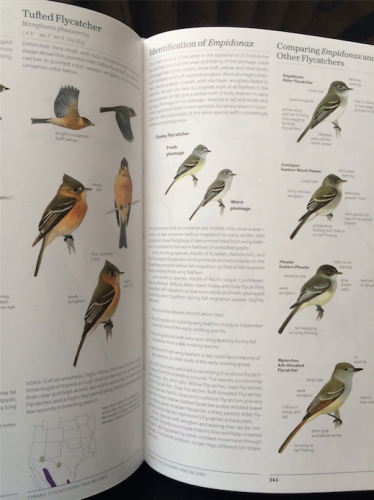 But apart from some picky issues with the color, there's far more to appreciate in the second edition, especially with the expansions of separating tricky species. Check out the handy empid comparison above (for those who haven't grown to dislike flycatchers as much as I do). There was some of that in the original, but the new guide has more comparisons with text explanation as well as paintings. And very useful info about where you can find certain species foraging.
But apart from some picky issues with the color, there's far more to appreciate in the second edition, especially with the expansions of separating tricky species. Check out the handy empid comparison above (for those who haven't grown to dislike flycatchers as much as I do). There was some of that in the original, but the new guide has more comparisons with text explanation as well as paintings. And very useful info about where you can find certain species foraging.
Here's another fun chart that's been added--a time table to help you identify woodpeckers by drumming sounds. I love these little details.
So overall--I think this guide will always be a go to book for identification in North America, especially with the addition of rare birds found up in Alaska. I think in this printing some of the plates are darker than I would like them to be--especially the red and rust colors. I think this is a guide best purchased in person so you can see if this printing bothers you. But overall this is still one of the best tools out there for someone wishing to take their birding watching to another level.







